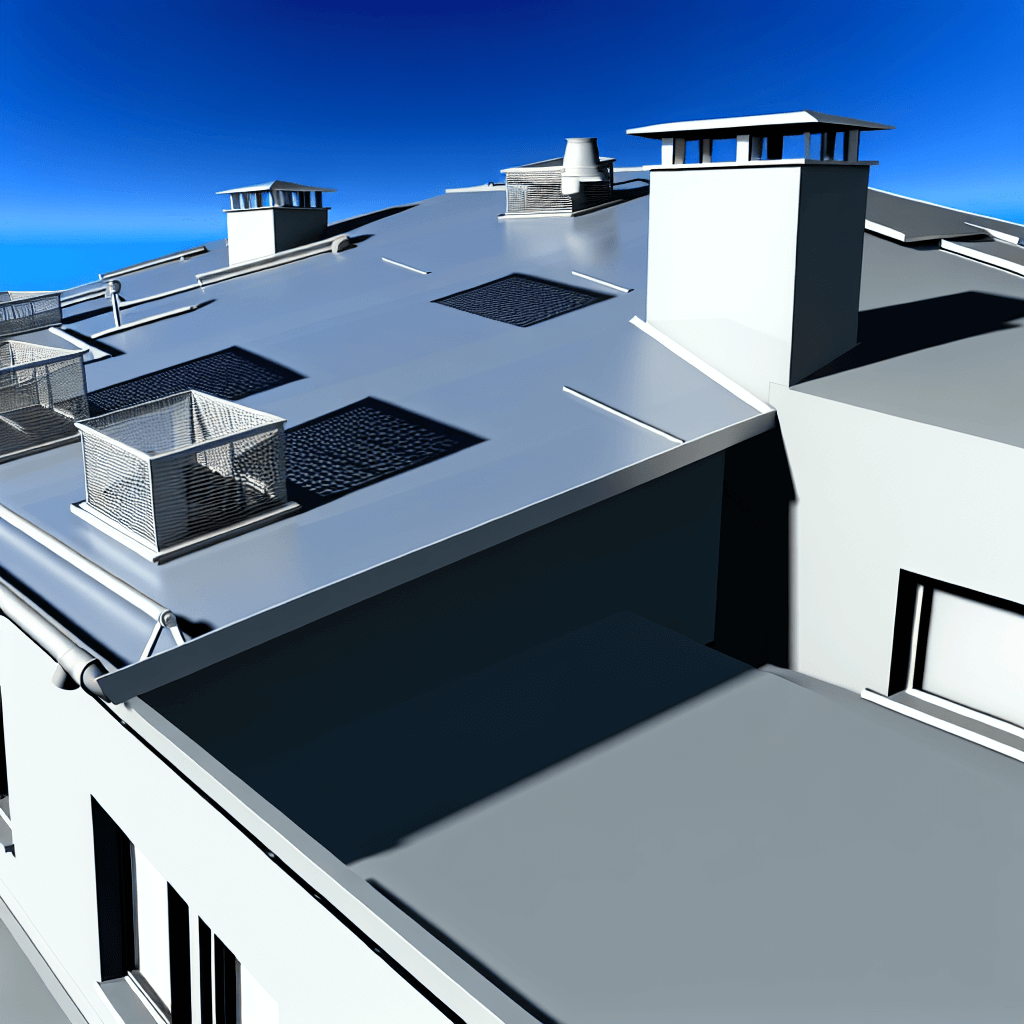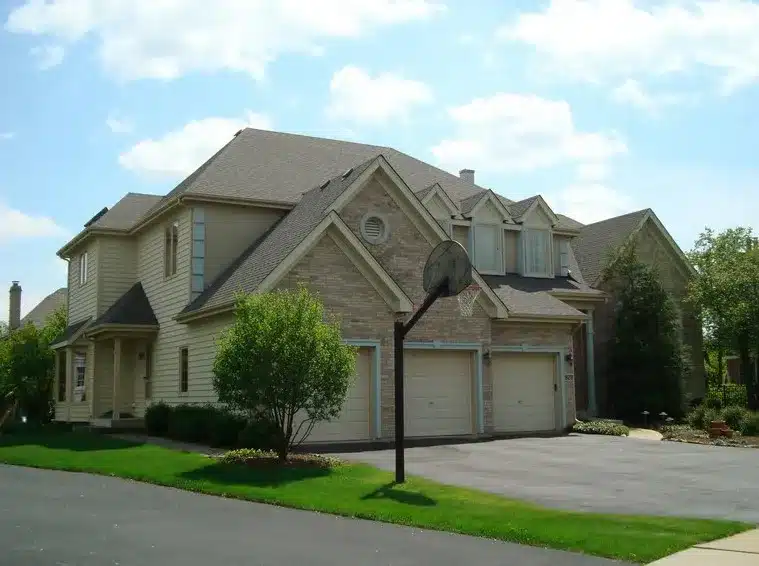• Discover effective strategies for optimizing roofing ventilation to maintain energy efficiency and extend roof life.
• Learn the importance of professional assessments for personalized ventilation solutions that ensure safety and compliance with building codes.
• Explore how proactive maintenance and the latest ventilation technologies contribute to a durable roofing system.
Spotting the Warning Signs of Inadequate Roof Ventilation
As the cooler months grace Lemont, IL, the health of your roof should be at the forefront of your home maintenance priorities. Telltale signs of poor roofing ventilation solutions start quietly, often going unnoticed until bigger problems arise. If your attic becomes a host to stifling heat or bitter cold, it’s time to investigate. A quick peek into this space can reveal if heat is trapped or if poor insulation is at play, both symptoms of insufficient ventilation.
Seasonal shifts bring about various challenges for homeowners in Lemont. With the onset of fall, fluctuating temperatures can cause condensation to accumulate in your attic which, left unchecked, invites rust on nails and hardware fixtures. Moisture accumulation is a clear signal that your home’s ventilation needs attention. A diligent inspection may also uncover the presence of mold or mildew, indicating that the moisture levels in your attic are higher than they should be.
To ensure your home is safeguarded against the perils of inadequate ventilation, vigilance is key. Observe your energy bills; a significant increase could suggest your heating or cooling system is working overtime due to poor air circulation in your attic. Additionally, the exterior of your home can offer clues, such as shingles that curl or lift – a direct consequence of heat buildup from within. Addressing these warnings promptly can avert the need for costly repairs and extend the longevity of your roof.
Preparing for a Ventilation Check-Up
Knowing what symptoms to look for lays the groundwork for the next steps: understanding and implementing effective roofing ventilation solutions. Armed with knowledge and a proactive approach, preserving the integrity of your home’s infrastructure becomes a manageable endeavor. Stay tuned as we delve into the essentials of roofing ventilation and how to select the right solutions for your home.
Understanding the Ventilation Equation
Bringing a breath of fresh air to your attic begins with understanding the essential principles of roofing ventilation. Proper ventilation is a delicate balance between air intake and exhaust, working in tandem to regulate temperature and moisture. In Lemont’s varied climate, ensuring this balance is vital to protect your home from the wear of intense seasons. Implementing this knowledge effectively can not only enhance your home’s comfort but also significantly reduce energy costs.
To translate this understanding into action, one must become acquainted with ventilation types and their functions. Each vent type—from the passive soffit vents to the dynamic ridge vents—plays a pivotal role in the overall system. Your house may need a tailored approach, something best assessed by expert roofing professionals. They can offer insights specific to Lemont’s architecture and seasonal challenges that may impact your roofing needs.
Maximizing Efficiency Through Strategic Ventilation
With the foundations laid, the next step is to carry out a ventilation strategy that aligns with your home’s unique design. Calculating the right amount of ventilation involves more than guesswork; it’s about understanding the space’s dimensions and how air moves within it. As a homeowner in Lemont, IL, familiarize yourself with local codes that determine the adequate ventilation necessary. This crucial step ensures you meet the standards set for safety and efficiency.
Once the calculations are set, the planning stage comes into play. It’s about deciding where your vents should sit for maximum effect, avoiding hotspots or areas with stagnant air. Professional guidance is invaluable here, preventing common pitfalls of DIY attempts, such as improperly installed insulation that can block ventilation paths. A well-executed plan secures year-round benefits, from a cool attic in the humid summers to dry conditions in the damp fall, maintaining your roof’s health and your comfort.
Step 1: Assess Your Roofing Ventilation Needs
Begin by evaluating your current roofing ventilation system. This may involve inspecting your attic space for signs of poor ventilation, such as condensation, rusted nails, or mold and mildew buildup, which can be common in the Lemont, IL, area during the fall season when temperature differences can create moisture issues.
Step 2: Understand Roofing Ventilation Principles
Educate yourself on how proper ventilation works. A well-designed roofing ventilation system typically ensures that air enters through the soffit (intake vents) and exits through the ridge or other exhaust vents, creating a continuous airflow.
Step 3: Select Suitable Ventilation Solutions
Explore the different types of ventilation solutions available, such as ridge vents, soffit vents, and turbine vents. Each has its advantages, and the choice may depend on your specific roof design and attic layout.
Step 4: Calculate Ventilation Requirements
Learn how to calculate the amount of ventilation your roof needs. Generally, the rule of thumb is 1 square foot of vent area for every 150 square feet of attic space. However, check local building codes for specifics to Lemont, IL.
Step 5: Plan Ventilation Positioning and Installation
Determine the ideal placement of intake and exhaust vents for optimal airflow. The goal is to create an even distribution of ventilation that prevents any dead air spaces in the attic.
Step 6: Install or Improve Insulation
Ensure that your insulation does not obstruct the airflow from your soffit vents. Sometimes improving or replacing insulation is necessary to achieve the best roofing ventilation and energy efficiency.
Step 7: Check Seasonal Effects
Particularly in fall, leaves and debris can block vents, hindering their efficiency. Regularly check and maintain your roofing vents to prevent such issues.
Step 8: Consider a Professional Inspection
Finally, it may be wise to have a roofing professional, especially someone familiar with the climate and buildings of Lemont, IL, inspect your ventilation system. They can provide specific advice and services to optimize your roofing ventilation.
Avoid These Common DIY Roof Ventilation Mistakes
It’s commendable to take on DIY projects to enhance your home’s roofing ventilation, but common errors can lead to more harm than good. In Lemont, IL, where each season presents its unique challenges, precision in enhancing ventilation is crucial. Let’s explore often-overlooked mistakes so you can sidestep them and ensure your project achieves its intended results.
Mistake 1: Obscuring Intake Vents with Insulation
Many DIYers unwittingly block intake vents with insulation, stifling the very airflow that’s essential for effective ventilation. Without clear soffit vents, air can’t circulate properly, leading to moisture and temperature build-ups.
Mistake 2: Neglecting Balanced Ventilation
Good ventilation isn’t just about having enough vent space—it’s about balance between intake and exhaust. Installing more exhaust than intake vents, or vice versa, disrupts airflow, which can result in poor air exchange and reduced efficiency.
Mistake 3: Overlooking Local Building Codes
Each area has specific building codes, and Lemont, IL is no exception. It’s a blunder to not check these codes before starting as they dictate the proper amount of ventilation required, preventing inadequate or excessive ventilation.
Mistake 4: Misjudging Vent Placement
One needs to plan vent placement carefully; haphazard installation can lead to dead spots where air doesn’t circulate. This is particularly true in complex roof designs where the natural flow of air might be interrupted.
Mistake 5: Ignoring Seasonal Debris
Especially in the fall, it’s easy to forget that vents can become clogged with leaves and twigs. Regular maintenance is overlooked at one’s peril, as blocked vents can swiftly render a ventilation system ineffective.
Mistake 6: Forgoing a Professional Inspection
Assuming that your assessment is as comprehensive as a professional’s might leave you blind to subtler issues. A seasoned expert familiar with local Lemont, IL conditions can provide invaluable advice beyond the scope of a layperson’s inspection.
Following these guidelines will help you avoid the common pitfalls of DIY roof ventilation improvements and preserve the longevity of your upgrading efforts.
Ensuring Effective Installation and Maintenance
With the right roofing ventilation solutions selected, the focus shifts to the correct installation. Precise positioning of intake and exhaust vents is critical to foster a uniform airflow throughout your attic. Professional installers from Owen Enterprises Inc. can ensure that your ventilation system is optimized for your specific roof structure and local Lemont conditions.
Maintenance is equally as critical to sustain the effectiveness of your installed ventilation systems. Seasonal debris like leaves and twigs can clog vents, especially during the fall in Lemont, compromising ventilation efficiency. Regular checks and cleanings are encouraged to maintain the integrity of the system, preventing costly future repairs and ensuring continued protection of your home.
Seeking Professional Insight For Lasting Solutions
While a keen homeowner can spot signs and comprehend the basics of ventilation, a professional evaluation can provide a more detailed analysis. They can spot less obvious issues and offer solutions tailored to your home’s needs and the local Lemont climate. Expert insights can save time and money in the long run, providing peace of mind that your roofing ventilation is performing at its best.
Engaging seasoned professionals like those at Owen Enterprises Inc. can elevate the longevity and functionality of your roofing system. They have the tools, knowledge, and experience necessary to navigate the intricacies of roof ventilation, ensuring that your home remains comfortable, safe, and energy-efficient year-round. When in doubt, do not hesitate to reach out for a consultation or inspection to protect your most valuable asset—your home.






